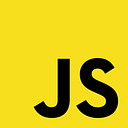SwiftUI: Animations made easy
2 min readApr 28, 2020
Apple’s SwiftUI has made it very easy, and fun, to create amazing animations. In this post, I would like to go over an animation that extends a card to full screen on tap.
Jumping into the code. Let’s create a card.
import SwiftUI
struct Card: View {
@State var show: Bool = false
var body: some View {
VStack {
HStack(alignment: .top) {
VStack(alignment: .leading, spacing: 8.0) {
Text("Day 1")
.font(.system(size: 24, weight: .bold))
.foregroundColor(.white)
Text("20 Sections")
.foregroundColor(Color.white.opacity(0.7))
}
Spacer()
Image(uiImage: #imageLiteral(resourceName: "Logo3"))
}
.padding(.leading, 15)
.padding(.trailing, 15)
.padding(.bottom, 20)
Spacer()
Image(uiImage: #imageLiteral(resourceName: "Card5"))
.resizable()
.aspectRatio(contentMode: .fit)
.frame(maxWidth: .infinity)
.frame(height: 140, alignment: .top)
}
.padding(20)
.frame(maxWidth: screen.width - 60, maxHeight: 280)
.background(Color(#colorLiteral(red: 0.2196078449, green: 0.007843137719, blue: 0.8549019694, alpha: 1)))
.clipShape(RoundedRectangle(cornerRadius: 30, style: .continuous))
.shadow(color: Color(#colorLiteral(red: 0.2196078449, green: 0.007843137719, blue: 0.8549019694, alpha: 1)).opacity(0.3), radius: 20, x: 0, y: 20)
}
}
struct Card_Previews: PreviewProvider {
static var previews: some View {
Card()
}
}let screen = UIScreen.main.bounds
Now let’s make the card full screen onTapGesture and animate the transition.
import SwiftUI
struct Card: View {
@State var show: Bool = false
var body: some View {
VStack {
HStack(alignment: .top) {
VStack(alignment: .leading, spacing: 8.0) {
Text("Day 1")
.font(.system(size: 24, weight: .bold))
.foregroundColor(.white)
Text("20 Sections")
.foregroundColor(Color.white.opacity(0.7))
}
Spacer()
Image(uiImage: #imageLiteral(resourceName: "Logo3"))
}
.padding(.leading, 15)
.padding(.trailing, 15)
.padding(.bottom, 20)
Spacer()
Image(uiImage: #imageLiteral(resourceName: "Card5"))
.resizable()
.aspectRatio(contentMode: .fit)
.frame(maxWidth: .infinity)
.frame(height: 140, alignment: .top)
}
.padding(show ? 30 : 20)
.padding(.top, show ? 30 : 0)
.frame(maxWidth: show ? .infinity : screen.width - 60, maxHeight: show ? .infinity : 280)
.background(Color(#colorLiteral(red: 0.2196078449, green: 0.007843137719, blue: 0.8549019694, alpha: 1)))
.clipShape(RoundedRectangle(cornerRadius: 30, style: .continuous))
.shadow(color: Color(#colorLiteral(red: 0.2196078449, green: 0.007843137719, blue: 0.8549019694, alpha: 1)).opacity(0.3), radius: 20, x: 0, y: 20)
.animation(.spring(response: 0.5, dampingFraction: 0.6, blendDuration: 0))
.onTapGesture {
self.show.toggle()
}
.edgesIgnoringSafeArea(.all)
}
}
struct Card_Previews: PreviewProvider {
static var previews: some View {
Card()
}
}let screen = UIScreen.main.bounds
Voila! With under ten lines of code you have created an awesome animation.
